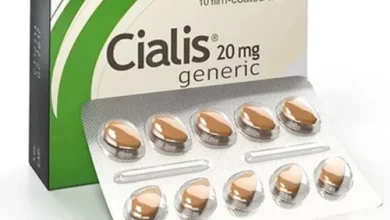The Healing Power of Hyperbaric Oxygenation Unlocking New Frontiers in Medical Treatment

In recent years, hyperbaric oxygenation therapy (HBOT) has garnered significant attention for its potential to accelerate healing and improve recovery in a variety of medical contexts. Once considered a treatment option primarily for diving-related injuries like decompression sickness, this innovative therapy has expanded into a broad spectrum of applications. From chronic wounds to brain injuries, the healing power of hyperbaric oxygenation is becoming increasingly recognized as a transformative tool in modern medicine.
What is Hyperbaric Oxygenation?
Hyperbaric oxygenation therapy involves breathing pure oxygen in a pressurized environment, typically within a specialized chamber. In normal atmospheric conditions, the air we breathe contains around 21% oxygen. However, during HBOT, patients breathe 100% oxygen in a pressurized chamber, which increases the amount of oxygen in their bloodstream and tissues. This enhanced oxygen delivery supports the body’s natural healing processes and promotes recovery.
The concept of using pressurized oxygen to treat medical conditions dates back to the 1600s, but it wasn’t until the 20th century that the technique began to see widespread clinical use. Over the years, researchers and healthcare providers have discovered the myriad of benefits that hyperbaric oxygen therapy can offer for a variety of conditions.
The Science Behind Hyperbaric Oxygenation
The fundamental premise of hyperbaric oxygenation lies in the principle of increased oxygen absorption. When oxygen is delivered under pressure, it dissolves into the bloodstream more efficiently than under normal conditions. This process allows oxygen to be transported to tissues that may not be receiving an adequate supply due to injury or illness. Additionally, the increased oxygen levels stimulate the production of collagen, promote the growth of new blood vessels (angiogenesis), and enhance the body’s ability to fight infection.
Hyperbaric oxygenation also helps combat inflammation, which is a key driver of many chronic conditions. By improving cellular repair and regeneration, HBOT accelerates the body’s natural healing processes. This makes it an appealing treatment option for a wide range of health concerns, from acute injuries to chronic diseases.
Medical Applications of Hyperbaric Oxygenation
While hyperbaric oxygen therapy is most commonly associated with decompression sickness (also known as “the bends”), its use has expanded significantly in recent decades. Today, HBOT is used to treat a variety of medical conditions, including:
- Chronic Wounds and Non-Healing Ulcers
Chronic wounds, such as diabetic foot ulcers and pressure sores, are among the most common conditions treated with hyperbaric oxygenation. These wounds often fail to heal due to poor blood flow, which limits oxygen delivery to the affected tissues. HBOT promotes healing by increasing the oxygen supply to the wound site, thereby enhancing tissue regeneration, improving blood flow, and fighting infection. As a result, hyperbaric oxygenation has proven to be an effective adjunctive therapy for patients with chronic, non-healing wounds.
- Traumatic Brain Injury (TBI) and Stroke
Traumatic brain injuries and strokes can cause extensive brain damage, leading to long-term cognitive, physical, and emotional impairments. Hyperbaric oxygenation has shown promising results in improving brain function following these events. By increasing oxygen levels in the brain, HBOT encourages neurogenesis (the growth of new neurons) and supports the repair of damaged brain tissue. Studies have demonstrated that patients who undergo HBOT following a stroke or traumatic brain injury often experience improvements in cognitive function, memory, and motor skills.
- Infections and Chronic Inflammatory Conditions
Infections that are difficult to treat with antibiotics, such as those associated with osteomyelitis (bone infection) and soft tissue infections, can benefit from the bactericidal effects of HBOT. Oxygen-rich environments inhibit the growth of anaerobic bacteria (which thrive in low-oxygen conditions) and promote the body’s immune response. Additionally, the anti-inflammatory effects of hyperbaric oxygenation help reduce the chronic inflammation seen in conditions like rheumatoid arthritis and inflammatory bowel disease.
- Burns and Tissue Damage
Severe burns can lead to tissue necrosis (death) and scarring, which can significantly impair a person’s quality of life. Hyperbaric oxygenation accelerates the healing of burn wounds by improving oxygenation to the affected tissues, stimulating the formation of new blood vessels, and reducing inflammation. In many cases, HBOT can help reduce the extent of scarring and improve long-term recovery outcomes for burn victims.
- Cancer Treatment Support
Though hyperbaric oxygenation is not a cure for cancer, it has shown potential in supporting cancer treatment, particularly in conjunction with radiation therapy. Radiation can cause damage to healthy tissues around the tumor site, leading to delayed wound healing and other complications. HBOT helps repair damaged tissues, reduce inflammation, and improve oxygen supply to the affected area, potentially reducing side effects and enhancing the effectiveness of radiation therapy.
- Sports Injuries and Recovery
Athletes have increasingly turned to hyperbaric oxygenation to aid in recovery from sports-related injuries. Whether it’s a muscle strain, ligament tear, or overuse injury, HBOT accelerates the healing process by promoting tissue regeneration and reducing inflammation. By improving oxygen delivery to injured tissues, athletes can recover more quickly and return to their training or competition with reduced risk of long-term damage.
Potential Benefits Beyond Traditional Medicine
While the medical benefits of hyperbaric oxygenation are widely recognized, recent studies have begun to explore its potential applications in wellness and anti-aging. Advocates suggest that the increased oxygen supply provided by HBOT can enhance skin health, improve energy levels, and even slow the aging process by stimulating cellular regeneration. Although more research is needed in these areas, the idea of using hyperbaric oxygenation for general wellness is gaining traction.
The Future of Hyperbaric Oxygenation
As our understanding of hyperbaric oxygenation therapy continues to grow, so does its potential in clinical settings. While HBOT is already being used in numerous medical applications, ongoing research is uncovering even more conditions that can benefit from this therapy. Scientists are investigating its potential to treat conditions such as Alzheimer’s disease, multiple sclerosis, and even certain types of cancer.
Additionally, advancements in hyperbaric technology are making the therapy more accessible to a wider population. Portable hyperbaric chambers are now available for home use, allowing individuals to undergo treatment in the comfort of their own homes. As the cost of HBOT decreases and its applications expand, it is likely that more people will have access to this powerful tool for healing.
Conclusion
Hyperbaric oxygenation therapy represents one of the most exciting frontiers in modern medicine. Its ability to accelerate healing, promote tissue regeneration, and combat chronic conditions positions it as a revolutionary treatment option for a wide variety of medical issues. As research into its applications continues to expand, the healing power of hyperbaric oxygenation is poised to transform not only the way we treat medical conditions but also the way we approach wellness and recovery in the future.









